Top 10 Textiles Importing Countries of the World
Md. Joynal Abdin*
Thank you for reading this post, don't forget to subscribe!Business Consultant & Digital Marketer
Co-Founder & CEO of Bangladesh Trade Center
International trade of textiles plays a crucial role in the global economy. Textiles are traded across borders to meet the demand for clothing, home textiles, industrial textiles, and other related products. Here are some key points about the international trade of textiles:
- Global Supply Chains: The textile industry relies heavily on global supply chains, with different countries specializing in different stages of the production process. For example, cotton may be grown in one country, yarn spun in another, fabric woven in a third country, and garments manufactured in yet another country.
- Major Exporters: Several countries are major exporters of textiles. China has traditionally been the world’s largest exporter of textiles and clothing, followed by other Asian countries such as Bangladesh, Vietnam, and India. Other significant exporters include the European Union (EU) member countries, Turkey, and the United States.
- Major Importers: Many countries import textiles to meet domestic demand. The United States, Germany, and the United Kingdom are among the largest importers of textiles. Other important importers include France, Japan, Italy, Spain, Belgium, and the Netherlands.
- Trade Agreements: Trade agreements play a significant role in facilitating textile trade. Bilateral and multilateral trade agreements reduce trade barriers, such as tariffs and quotas, and promote the flow of textiles between countries. Examples include the North American Free Trade Agreement (NAFTA), the Trans-Pacific Partnership (TPP), and the Regional Comprehensive Economic Partnership (RCEP).
- Trade Issues: The textile industry faces various trade issues, including protectionism, intellectual property rights violations, and trade disputes. Countries sometimes impose tariffs or quotas to protect domestic textile industries from foreign competition. Intellectual property rights infringements, such as counterfeit products, are also a concern.
- Trade Data: Trade statistics and data are essential for monitoring and analyzing the international textile trade. Organizations such as the World Trade Organization (WTO), the United Nations Conference on Trade and Development (UNCTAD), and national customs authorities compile and publish trade data to track the flow of textiles between countries.
It’s important to note that the dynamics of international textile trade can change over time due to factors such as shifting global economic trends, changes in consumer preferences, and shifts in production capabilities. Therefore, it is recommended to refer to the latest trade data sources and reports for the most up-to-date information on the international trade of textiles.
Top 10 Textiles Importing Countries:
The following list represents the top 10 importing countries for textiles:
- United States
- Germany
- Japan
- United Kingdom
- France
- Italy
- Spain
- Belgium
- Netherlands
- Canada
These countries have a significant demand for textiles and import a wide range of products including fabrics, clothing, home textiles, and industrial textiles from various manufacturing nations around the world.
- United States
The United States is one of the largest importing countries for textiles in the world. The U.S. textile industry relies on imports to meet domestic demand for a wide range of textile products, including fabrics, apparel, home textiles, and technical textiles. Here are some key points about the United States as a textile importing country:
- Size of Imports: The United States has a substantial textile import market. In recent years, the value of textile imports into the U.S. has been in the billions of dollars annually.
- Consumer Demand: The U.S. textile market is driven by consumer demand for clothing and home textiles. American consumers have a diverse range of preferences and styles, leading to a need for a wide variety of imported textiles.
- Sourcing: The United States imports textiles from various countries around the world. Major sourcing regions for the U.S. textile imports include Asia (particularly China, Vietnam, Bangladesh, and India), Mexico, Canada, and countries in the European Union.
- Free Trade Agreements: The United States has entered into several free trade agreements (FTAs) that have had an impact on textile imports. For example, the North American Free Trade Agreement (NAFTA) and its successor, the United States-Mexico-Canada Agreement (USMCA), have facilitated textile trade between the United States, Mexico, and Canada by eliminating or reducing tariffs and trade barriers.
- Tariffs and Trade Policy: Tariffs and trade policy can influence the textile import landscape. The U.S. government can impose tariffs on certain imported textiles to protect domestic industries or address trade issues. Trade policy decisions and negotiations can have implications for the textile industry, including import quotas and trade dispute resolutions.
- Regulatory Compliance: Imported textiles must comply with U.S. regulations, standards, and labeling requirements. The U.S. government, through agencies like the U.S. Customs and Border Protection (CBP) and the Federal Trade Commission (FTC), enforces regulations related to textile imports, including country of origin labeling, safety standards, and anti-dumping measures.
The United States’ textile import market is influenced by various factors, including consumer preferences, trade policies, and global sourcing trends. It is important to note that the specific details and trends of the U.S. textile import market can change over time, and it is advisable to refer to the latest trade data and reports for the most up-to-date information.
- Germany
Germany is one of the leading importing countries for textiles in the world. The German textile industry relies on imports to meet the demand for a wide range of textile products, including fabrics, apparel, home textiles, and technical textiles. Here are some key points about Germany as a textile importing country:
- Import Market Size: Germany has a significant market for textile imports. The value of textile imports into Germany has been consistently high, reflecting the country’s strong demand for textiles.
- Consumer Demand: The German market is characterized by a diverse and discerning consumer base with high standards for quality and design. German consumers have a preference for a wide variety of textile products, ranging from high-end fashion and luxury goods to functional and technical textiles.
- Sourcing: Germany imports textiles from various countries around the world. Major sourcing regions for German textile imports include other European Union member countries, particularly Italy, France, and the Netherlands. Additionally, countries in Asia, such as China, Turkey, and India, are significant sources of textiles for Germany.
- Trade Agreements: Germany benefits from trade agreements within the European Union, such as the free movement of goods and the elimination of tariffs among EU member countries. These agreements facilitate trade in textiles between Germany and other EU nations.
- Sustainability and Quality: Germany places a strong emphasis on sustainability and quality in its textile imports. There is a growing demand for eco-friendly and ethically produced textiles, as well as certifications such as GOTS (Global Organic Textile Standard) and Oeko-Tex Standard 100, which ensure environmentally friendly and socially responsible manufacturing processes.
- Regulatory Compliance: Imported textiles must comply with German and EU regulations, including product safety standards, labeling requirements, and customs procedures. Germany has established agencies such as the Federal Ministry of Economic Cooperation and Development (BMZ) and the Federal Ministry for Economic Affairs and Energy (BMWi) to oversee import regulations.
The German textile import market is influenced by factors such as consumer preferences, trade policies, sustainability initiatives, and technological advancements. It’s important to note that the specific details and trends of the German textile import market can change over time, and it is advisable to refer to the latest trade data and reports for the most up-to-date information.
- Japan
Japan is a significant textile importing country with a strong demand for a wide range of textile products. The Japanese textile industry relies on imports to meet domestic consumption and cater to various sectors, including apparel, home textiles, and technical textiles. Here are some key points about Japan as a textile importing country:
- Import Market Size: Japan has a sizable textile import market. The country’s textile imports contribute to meeting the demand of its large population and diverse consumer preferences.
- Consumer Demand: Japanese consumers are known for their appreciation of high-quality products and attention to detail. The demand for textiles in Japan is driven by consumer preferences for fashionable and innovative apparel, as well as functional and well-designed home textiles.
- Sourcing: Japan imports textiles from various countries around the world. Major sourcing regions for Japanese textile imports include Asian countries such as China, Vietnam, Bangladesh, and Indonesia. Additionally, countries in Europe, such as Italy and France, are known for supplying high-end and luxury textiles to Japan.
- Technical Textiles: Japan is a global leader in technical textiles, which are used in various industries such as automotive, healthcare, and electronics. Japan imports specialized technical textiles from different countries to support its manufacturing and innovation-driven industries.
- Trade Agreements: Japan has entered into several trade agreements that impact its textile imports. For example, the Japan-EU Economic Partnership Agreement (JEEPA) and the Comprehensive and Progressive Agreement for Trans-Pacific Partnership (CPTPP) have facilitated trade and reduced trade barriers between Japan and participating countries.
- Cultural and Traditional Textiles: Japan has a rich textile heritage, with a strong emphasis on traditional textiles such as kimono fabrics and traditional crafts. While the production of these textiles often takes place domestically, Japan also imports materials and fabrics to support the traditional textile industry.
- Regulatory Compliance: Imported textiles into Japan must comply with regulations and standards related to product safety, labeling, and quality control. The Ministry of Economy, Trade and Industry (METI) and other government agencies oversee compliance with regulations and enforce standards.
The Japanese textile import market is influenced by factors such as consumer preferences, trade policies, technological advancements, and sustainability initiatives. It’s important to note that the specific details and trends of the Japanese textile import market can change over time, and it is advisable to refer to the latest trade data and reports for the most up-to-date information.
- United Kingdom
The United Kingdom (UK) is a significant textile importing country with a diverse market for textiles. The UK textile industry relies on imports to meet the demand for a wide range of textile products, including fabrics, apparel, home textiles, and technical textiles. Here are some key points about the UK as a textile importing country:
- Import Market Size: The UK has a substantial market for textile imports. The country’s demand for textiles is driven by its large population, diverse consumer preferences, and the presence of a vibrant fashion and retail industry.
- Consumer Demand: UK consumers have varied preferences, ranging from high-end fashion to sustainable and ethically produced textiles. The demand for quality, innovation, and style influences the types of textiles imported into the country.
- Sourcing: The UK imports textiles from various countries worldwide. Major sourcing regions for UK textile imports include European Union member countries, particularly those with established textile industries such as Italy, Germany, and France. Additionally, countries in Asia, such as China, Bangladesh, and India, are significant sources of textile imports for the UK.
- Trade Agreements: The UK’s textile imports have been influenced by trade agreements both within and outside the European Union. Brexit has led to changes in trade arrangements, and the UK has negotiated new trade agreements, such as the UK-Japan Comprehensive Economic Partnership Agreement, to facilitate trade in textiles with partner countries.
- Sustainability and Ethical Considerations: There is an increasing emphasis on sustainability and ethical sourcing in the UK textile industry. Consumers and businesses are demanding transparency in the supply chain, responsible sourcing practices, and certifications like GOTS (Global Organic Textile Standard) and Fairtrade.
- Regulatory Compliance: Imported textiles into the UK must adhere to regulations related to product safety, labeling, and customs procedures. The UK government, through bodies such as the Department for International Trade (DIT) and the Trading Standards Agency, oversees compliance and enforces regulations.
- Fashion and Retail Industry: The UK has a thriving fashion and retail industry, driving demand for imported textiles. London, in particular, is known as a global fashion capital and hosts various trade shows and events that influence textile imports.
- France
France is a significant textile importing country with a diverse and vibrant market for textiles. The French textile industry relies on imports to meet the demand for a wide range of textile products, including fabrics, apparel, home textiles, and technical textiles. Here are some key points about France as a textile importing country:
- Import Market Size: France has a substantial market for textile imports. The country’s demand for textiles is driven by its population size, fashion-conscious consumers, and a strong retail industry.
- Consumer Demand: French consumers have a reputation for their appreciation of high-quality and stylish textiles. The demand for textiles in France is influenced by fashion trends, designer brands, and a focus on craftsmanship and luxury.
- Sourcing: France imports textiles from various countries around the world. Major sourcing regions for French textile imports include European Union member countries, particularly those with renowned textile industries such as Italy, Germany, and Spain. Additionally, countries in Asia, such as China, Bangladesh, and India, are significant sources of textile imports for France.
- Fashion and Luxury Industries: France is known globally as a hub for fashion and luxury goods. The French fashion industry plays a significant role in driving the demand for imported textiles, as French designers and fashion houses often source fabrics and materials from international suppliers.
- Trade Agreements: France’s textile imports are influenced by trade agreements within the European Union and agreements with other countries. Trade agreements such as the EU’s trade deals with countries like Japan, Canada, and South Korea facilitate trade in textiles by reducing tariffs and trade barriers.
- Sustainability and Ethical Considerations: There is a growing emphasis on sustainability and ethical sourcing in the French textile industry. French consumers and businesses are increasingly concerned about the environmental and social impact of textile production, leading to a demand for eco-friendly and ethically produced textiles.
- Regulatory Compliance: Imported textiles into France must comply with regulations related to product safety, labeling, and customs procedures. French government agencies, such as the Ministry of the Economy and Finance, oversee compliance with regulations and enforce standards.
The French textile import market is influenced by factors such as consumer preferences, trade policies, sustainability initiatives, and the influence of the fashion and luxury industries. It’s important to note that the specific details and trends of the French textile import market can change over time, and it is advisable to refer to the latest trade data and reports for the most up-to-date information.
- Italy
Italy is known for its strong textile and fashion industry, but it also imports textiles to meet its diverse and evolving market demands. Here are some key points about Italy as a textile importing country:
- Import Market Size: Italy has a notable market for textile imports. While Italy is renowned for its textile and fashion production, the country also imports textiles to cater to a wide range of consumer preferences and industrial needs.
- Consumer Demand: Italian consumers have a deep appreciation for quality, craftsmanship, and innovative designs. The demand for textiles in Italy is driven by the country’s fashion-conscious population and its reputation as a global fashion capital.
- Sourcing: Italy imports textiles from various countries worldwide. While Italy has a robust domestic textile industry, it also sources fabrics, materials, and finished textile products from other countries to complement its own production capabilities. Major sourcing regions for Italian textile imports include other European Union member countries, such as France and Germany, as well as countries in Asia and the Americas.
- High-End Fashion and Luxury: Italy is known for its high-end fashion and luxury goods, and this sector heavily influences the country’s textile imports. Italian fashion houses and designers often source luxury fabrics and materials from international suppliers to create their renowned collections.
- Technical Textiles: Italy has a strong industrial sector that utilizes technical textiles in various applications, including automotive, healthcare, and construction. Italy imports specialized technical textiles to support these industries and to take advantage of innovations from other countries.
- Trade Agreements: Italy’s textile imports are influenced by trade agreements both within the European Union and with other countries. The trade agreements facilitate the flow of textiles and reduce trade barriers, ensuring a smoother import process.
- Regulatory Compliance: Imported textiles into Italy must comply with regulations related to product safety, labeling, and customs procedures. Italian government agencies, such as the Ministry of Economic Development and the Italian Customs Agency, oversee compliance with regulations and enforce standards.
The Italian textile import market is influenced by factors such as consumer preferences, trade policies, sustainability initiatives, and the influence of the fashion and luxury industries. It’s important to note that the specific details and trends of the Italian textile import market can change over time, and it is advisable to refer to the latest trade data and reports for the most up-to-date information.
- Spain
Spain is a notable textile importing country with a diverse market for textiles. The Spanish textile industry relies on imports to meet the demand for a wide range of textile products, including fabrics, apparel, home textiles, and technical textiles. Here are some key points about Spain as a textile importing country:
- Import Market Size: Spain has a significant market for textile imports. The country’s demand for textiles is driven by its population size, consumer preferences, and a strong textile and fashion industry.
- Consumer Demand: Spanish consumers have varied preferences, ranging from fast fashion to high-quality and sustainable textiles. The demand for textiles in Spain is influenced by fashion trends, affordability, and the increasing focus on sustainability.
- Sourcing: Spain imports textiles from various countries worldwide. Major sourcing regions for Spanish textile imports include other European Union member countries, particularly those with established textile industries such as Italy, France, and Germany. Additionally, countries in Asia, such as China, Bangladesh, and India, are significant sources of textile imports for Spain.
- Fashion and Textile Industry: Spain has a vibrant fashion and textile industry, with internationally renowned fashion brands and designers. The industry’s influence and demand for different textiles drive the need for imports to complement domestic production.
- Trade Agreements: Spain’s textile imports are influenced by trade agreements within the European Union and agreements with other countries. Trade agreements, such as those within the EU and with countries like Japan and Canada, help facilitate trade by reducing tariffs and trade barriers.
- Regulatory Compliance: Imported textiles into Spain must comply with regulations related to product safety, labeling, and customs procedures. Spanish government agencies, such as the Ministry of Industry, Trade and Tourism, oversee compliance and enforce standards.
- Textile Clusters: Spain has several textile clusters or regions known for specific types of textiles or manufacturing expertise. These clusters have a significant influence on textile imports, as they often complement their production with imported textiles for specialized needs.
The Spanish textile import market is subject to various factors, including consumer trends, trade policies, sustainability initiatives, and the influence of the fashion and textile industry. It’s important to note that the specific details and trends of the Spanish textile import market can change over time, and it is advisable to refer to the latest trade data and reports for the most up-to-date information.
- Belgium
Belgium is a notable textile importing country with a significant market for textiles. The Belgian textile industry relies on imports to meet the demand for a wide range of textile products, including fabrics, apparel, home textiles, and technical textiles. Here are some key points about Belgium as a textile importing country:
Import Market Size: Belgium has a substantial market for textile imports. The country’s demand for textiles is driven by its population size, consumer preferences, and its position as a hub for fashion and trade.
Consumer Demand: Belgian consumers have diverse preferences, ranging from high-end fashion to sustainable and functional textiles. The demand for textiles in Belgium is influenced by fashion trends, quality, and innovation.
Sourcing: Belgium imports textiles from various countries worldwide. Major sourcing regions for Belgian textile imports include other European Union member countries, particularly those with established textile industries such as Italy, France, and Germany. Additionally, countries in Asia, such as China, Bangladesh, and India, are significant sources of textile imports for Belgium.
Fashion and Trade Hub: Belgium, especially cities like Brussels and Antwerp, is known as a fashion and trade hub. The country hosts international fashion events and trade fairs, attracting fashion professionals and influencing the demand for imported textiles.
Technical Textiles: Belgium has a strong industrial sector that utilizes technical textiles in various applications, including automotive, aerospace, and medical sectors. Belgium imports specialized technical textiles to support these industries and take advantage of innovations from other countries.
Trade Agreements: Belgium’s textile imports are influenced by trade agreements within the European Union and agreements with other countries. These agreements facilitate trade by reducing tariffs and trade barriers, ensuring smooth import processes.
Regulatory Compliance: Imported textiles into Belgium must comply with regulations related to product safety, labeling, and customs procedures. Belgian government agencies, such as the Federal Public Service Economy and the Federal Agency for the Safety of the Food Chain, oversee compliance and enforce standards.
The Belgian textile import market is subject to various factors, including consumer preferences, trade policies, sustainability initiatives, and the influence of the fashion and trade industry. It’s important to note that the specific details and trends of the Belgian textile import market can change over time, and it is advisable to refer to the latest trade data and reports for the most up-to-date information.
- Netherlands
The Netherlands is a notable textile importing country with a significant market for textiles. The Dutch textile industry relies on imports to meet the demand for a wide range of textile products, including fabrics, apparel, home textiles, and technical textiles. Here are some key points about the Netherlands as a textile importing country:
Import Market Size: The Netherlands has a substantial market for textile imports. The country’s demand for textiles is driven by its population size, consumer preferences, and the presence of a strong fashion and retail industry.
Consumer Demand: Dutch consumers have diverse preferences, ranging from fashion-forward and sustainable textiles to functional and high-quality products. The demand for textiles in the Netherlands is influenced by fashion trends, affordability, and a focus on sustainability.
Sourcing: The Netherlands imports textiles from various countries worldwide. Major sourcing regions for Dutch textile imports include other European Union member countries, particularly those with established textile industries such as Germany, Belgium, and Italy. Additionally, countries in Asia, such as China, Bangladesh, and India, are significant sources of textile imports for the Netherlands.
Fashion and Retail Industry: The Netherlands has a thriving fashion and retail industry, which contributes to the demand for imported textiles. Dutch fashion brands, designers, and retailers often source fabrics, materials, and finished textile products from international suppliers to meet the needs of their customers.
Trade Agreements: The Netherlands’ textile imports are influenced by trade agreements within the European Union and agreements with other countries. These agreements facilitate trade and reduce trade barriers, enabling smoother import processes.
Sustainability and Ethical Considerations: There is a growing emphasis on sustainability and ethical sourcing in the Dutch textile industry. Dutch consumers and businesses are increasingly concerned about the environmental and social impact of textile production, leading to a demand for eco-friendly and ethically produced textiles.
Regulatory Compliance: Imported textiles into the Netherlands must comply with regulations related to product safety, labeling, and customs procedures. Dutch government agencies, such as the Ministry of Economic Affairs and Climate Policy and the Netherlands Food and Consumer Product Safety Authority, oversee compliance and enforce standards.
The Dutch textile import market is influenced by factors such as consumer preferences, trade policies, sustainability initiatives, and the influence of the fashion and retail industry. It’s important to note that the specific details and trends of the Dutch textile import market can change over time, and it is advisable to refer to the latest trade data and reports for the most up-to-date information.
- Canada
Canada is a significant textile importing country with a diverse market for textiles. The Canadian textile industry relies on imports to meet the demand for a wide range of textile products, including fabrics, apparel, home textiles, and technical textiles. Here are some key points about Canada as a textile importing country:
Import Market Size: Canada has a considerable market for textile imports. The country’s demand for textiles is driven by its population size, consumer preferences, and a strong retail industry.
Consumer Demand: Canadian consumers have varied preferences, ranging from fast fashion to sustainable and ethically produced textiles. The demand for textiles in Canada is influenced by fashion trends, affordability, and an increasing focus on environmentally friendly and socially responsible products.
Sourcing: Canada imports textiles from various countries worldwide. Major sourcing regions for Canadian textile imports include other countries in North America (particularly the United States and Mexico), as well as Asian countries such as China, Bangladesh, and India. Additionally, European countries, including Italy, Germany, and the United Kingdom, are significant sources of textile imports for Canada.
Trade Agreements: Canada’s textile imports are influenced by trade agreements, such as the North American Free Trade Agreement (NAFTA) and its successor, the United States-Mexico-Canada Agreement (USMCA). These agreements facilitate trade and provide preferential treatment for textiles and clothing between the participating countries.
Regulatory Compliance: Imported textiles into Canada must comply with regulations related to product safety, labeling, and customs procedures. Canadian government agencies, such as the Canada Border Services Agency (CBSA) and the Competition Bureau, oversee compliance and enforce standards.
Indigenous Textiles: Canada has a rich cultural heritage, including the production of textiles by Indigenous communities. While some traditional textiles are produced domestically, Canada also imports materials and fabrics to support the Indigenous textile industry.
Technical Textiles: Canada has various industries that utilize technical textiles, including automotive, aerospace, and healthcare. Canada imports specialized technical textiles to support these sectors and take advantage of technological advancements from other countries.
The Canadian textile import market is subject to various factors, including consumer preferences, trade policies, sustainability initiatives, and the influence of the fashion and retail industry. It’s important to note that the specific details and trends of the Canadian textile import market can change over time, and it is advisable to refer to the latest trade data and reports for the most up-to-date information.
*Author’s Short Profile:
Mr. Md. Joynal Abdin is a Business Consultant & Digital Marketer based in Dhaka, Bangladesh. He is also Co-Founder & CEO of Bangladesh Trade Center. Previously he served at Dhaka Chamber of Commerce & Industry (DCCI) as Executive Secretary; DCCI Business Institute (DBI) as Executive Director; SME Foundation as Deputy Manager; and the Federation of Bangladesh Chambers of Commerce & Industry (FBCCI) as Assistant Secretary.
The list of services Mr. Abdin is offering includes but not limited to Business Research and Documentations like Feasibility Study, Project Proposal Preparation, Writing Business Manual, Standard Operating Procedures etc.; Export Market Selection and Product Positioning at Home and Abroad; Buyers-Sellers Matchmaking; Website Development; Search Engine Optimization (SEO); and Social Media Marketing etc.
Developing Bangladesh Business Consultant & Digital Marketer Read More…
Social tagging: #Biggest textile importers > #Global textile trade leaders > #Key textile import markets > #Largest textiles importing countries > #Leading textiles importers > #Major textile import destinations > #Major textiles importers worldwide > #Top countries for textile imports > #Top global textile markets > #Top textile buying nations > Textile Importing Countries > Top 10 Textile Importing Countries > Top 10 Textiles Importing Countries of the World
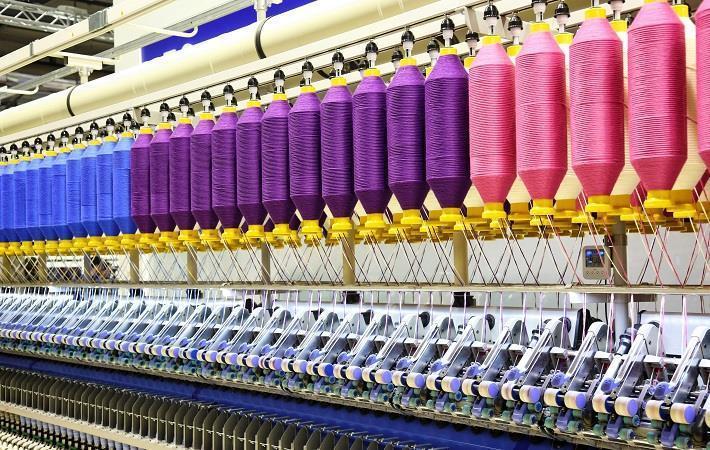
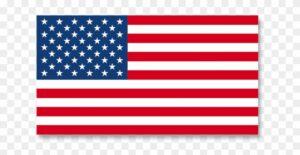
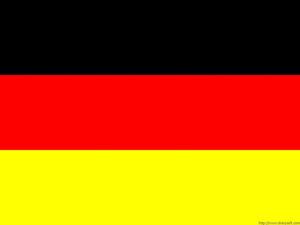
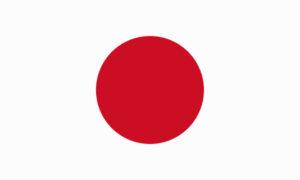
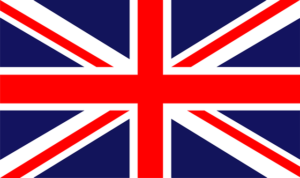
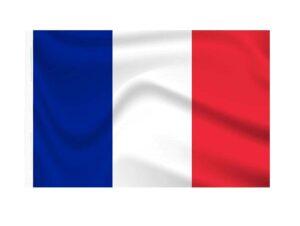
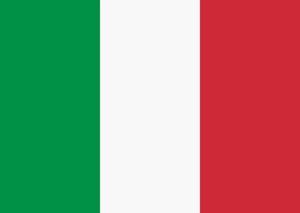

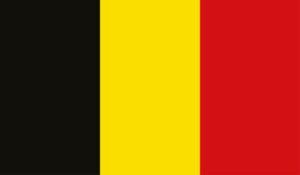
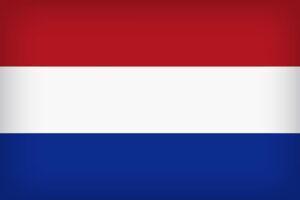
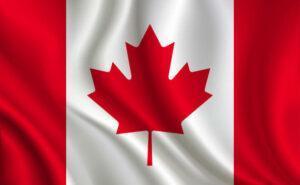


 by
by